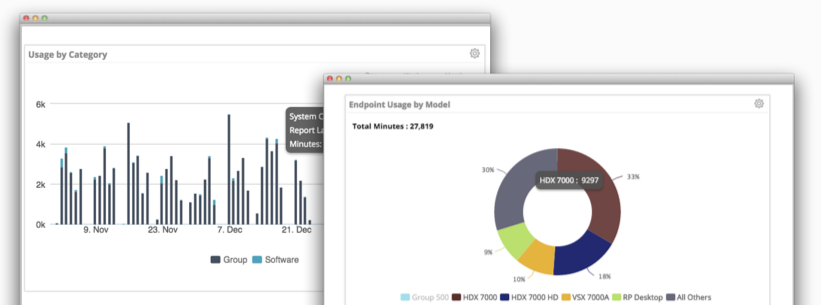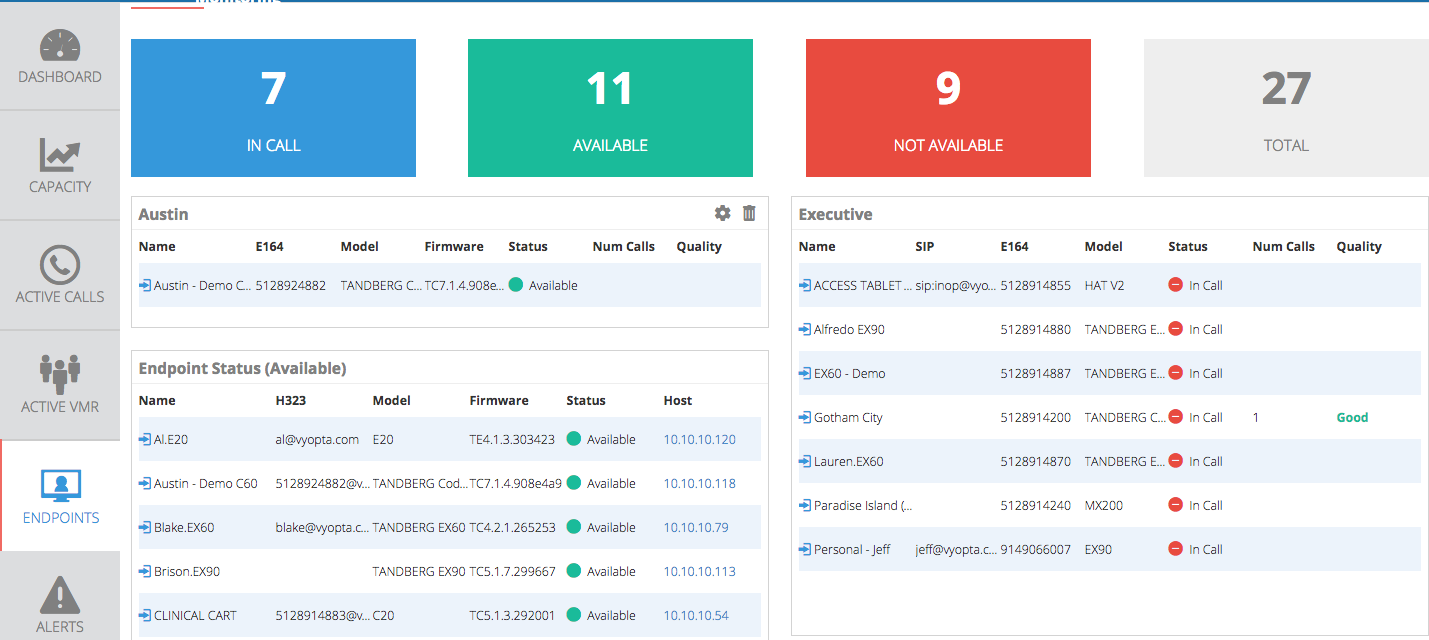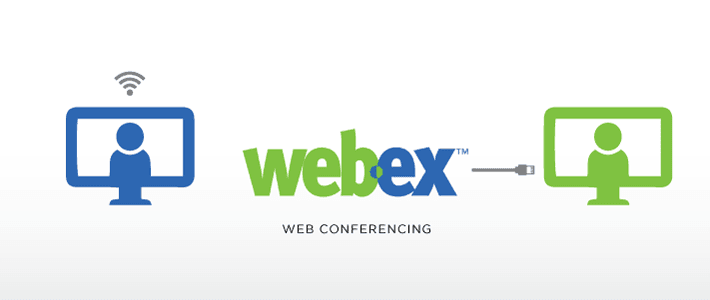
Today we announced the addition of support for Polycom RMX, DMA, and Resource Manager devices to our core analytics and real-time monitoring products. We now pull statistics on all devices in the network including Polycom Group Series, HDX and endpoints of any kind connected to Polycom infrastructure. Organizations can now use vAnalytics™ to monitor, support and optimize their Polycom video networks.
This has been the culmination of a lot of work by the Vyopta team, so I first want to take a minute to thank everyone involved including product development, customer success, and sales. This awesome extension of our vAnalytics product would not have been possible without these great minds behind the scenes.
How does Vyopta’s Polycom troubleshooting feature work?
On to business. What does this mean for You?
First of all, it means those of you who have infrastructure from Polycom can now gain the full benefit of Real Time Monitoring and Alerts to help speed up your IT Support teams so they can find and fix problems before they escalate or ruin a meeting. This includes monitoring of device availability, call status, capacity, and call quality from a single tool with a customizable dashboard and configurable alerts. Boom.
Second, it means Polycom customers now gain the benefit of our integrated analytics and reporting engine that collects data from all the leading technology providers, cleans, deduplicates, merges, processes, stores (for up to 8 years), and presents the data in a simple user interface.
Does This Already Exist?
Polycom did launch the RealAccess Service Deliver Platform which includes some analytics. It is great to see more companies understanding the value of delivering accurate and simple reporting to their customers. The RealAccess™ product they have brought to market is really great, and we are big fans. In fact, we learned a bit from the approach that Polycom took.
However, there are a few additional features that outline the differences between Polycom RealAccess and Vyopta:
1. ) Real Time Monitoring: There are two ways to grow adoption – making it easier to use and making it an enjoyable experience. The user experience relies heavily on being able to ensure that calls are high quality and that services are always available. It is nearly impossible to do this without a robust monitoring tool for device status, capacity, quality, and performance.

2. ) Focus on derived analysis: At Vyopta, we go beyond delivering the summary of call detail reports to create the real world metrics that help large organizations drive growth in usage. The main example is how we assemble calls using business rules and intelligent, logical connections into meetings so that users can track meeting sizes, durations, and dialing behavior. We also collect information on connection issues and provide insights to track changes over time, among other things.
3. ) Call Quality Analytics: The ability to monitor usage is critical to understanding what your users are doing. Call quality ensures that you can go a step beyond this and ensure that the video service levels are meeting the expectations of users whether they are in a large video-enabled conference room or calling in from a laptop with RealPresence® Desktop.
Multi-vendor support: Polycom provides end to end video conferencing solutions; meaning most organizations can meet all of their video conferencing needs with just Polycom endpoints and infrastructure alone. However, for whatever reasons – be it purchasing, holdovers in IT from older technologies, or engineers who fall for the next new thingamajig; the homogeneous environment is rare in large enterprises. Nobody has time to pull all of these separate reports and then attempt to merge the different metrics. This is why Vyopta does it for you in a single, customizable, easy to use tool. vAnalytics is the only product that provides a single system for enterprises to monitor multi- vendor video environments,ideal for enterprises that use Polycom alongside technology from Cisco,Vidyo, Pexip, and Acano.
The main reason we’re so excited to expand our support for more video technologies is that we believe in the opportunity of video collaboration. It seems like there are new articles out every week about video growing in the enterprise or another new vendor doubling their user base. It’s crazy busy out there, and we want to do everything we can to keep up. By partnering with leaders like Polycom and others, we are doing our part to remove barriers to video collaboration for customers everywhere. The simpler we can make the management of video systems, the more likely it is that people will use more video collaboration.



